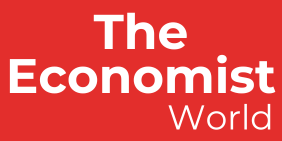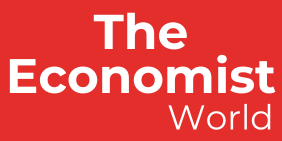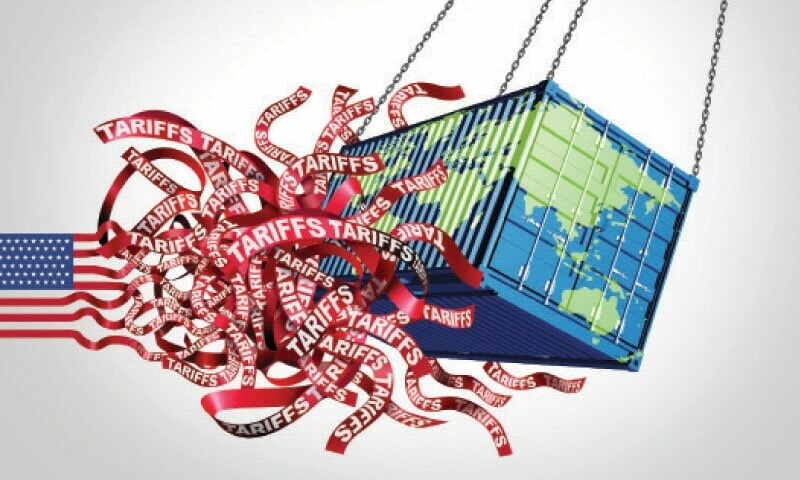President Trump’s sweeping import tariffs — including a 10 per cent flat tariff on products from most US trading partners and additional “reciprocal” tariffs on 57 countries — have disrupted the global trade system.
These measures have driven US import tariffs from an average of 2pc to 22pc, the highest level in over a century. The executive memorandum introducing these tariffs describes them as “fair and reciprocal”, but they are neither. Instead, they follow a simplistic formula based on a country’s trade deficit with the US, without consideration of its tariff levels or the size of its economy.
For instance, in 2024, Pakistan exported $5.2 billion to the US while importing $2.1bn, resulting in a trade surplus of $3.1bn. Under the tariff formula — dividing 5.2 by 3.1 and halving the result — Pakistan’s exports would face an estimated tariff of 29pc. Many small countries, such as Laos, Lesotho, Mauritius, and Myanmar, with limited economies and minimal exports, are subject to significantly higher tariffs than wealthier nations.
Economists worldwide overwhelmingly warn that these tariffs could have severe economic repercussions, not only for the US but also for many other nations. Such sweeping trade restrictions threaten to disrupt global supply chains, raise costs for businesses and consumers, and provoke retaliatory measures. The immediate fallout is already evident, with stock markets experiencing sharp declines as investor confidence wavers. Growing concerns suggest that escalating trade tensions could push some economies, including the US, toward recession.
Many textile exporters view them and the newly reduced power rates as an opportunity to attract fresh investments
The global response remains uncertain. China has already imposed 34pc counter-tariffs on all US imports. Other major trading partners — including Canada and the European Union — are still deliberating countermeasures, though many are exploring diplomatic solutions to mitigate the impact.
Some, like India, have already cut tariffs on several items and are considering further reductions on key products of US export interest — including automobiles, auto parts, gems, jewellery, and select agricultural products such as dairy and processed foods — as part of a broader strategy to appease Trump and potentially negotiate a bilateral free trade agreement.
Vietnam has agreed to bring all tariffs to zero if they can get the US to lower tariffs on them. Meanwhile, Israel has already eliminated all tariffs on US imports, hoping the US will reciprocate by exempting Israeli exports from tariffs.
As the US remains Pakistan’s largest export destination as a single country, the new tariff regime is a cause for concern. However, many leading textile and clothing exporters see this as an opportunity to expand market share. They suggest eliminating tariffs on US imports such as cotton, soybeans, and pharmaceuticals to improve the trade balance and pursue a free trade agreement (FTA).
However, this option remains unlikely, as the US is not negotiating new FTAs. Unlike Israel and Vietnam, Pakistan does not have an FTA with the US and cannot unilaterally lower tariffs exclusively for that country, as it would be required to extend the same treatment to other World Trade Organisation members. Of course, nothing prevents Pakistan from implementing broader tariff reductions for all countries while focusing on items of US export interest.
The varied tariff rates across countries creates a unique window of opportunity for Pakistan. Whereas it faces a new tariff of 29pc (plus a 10pc base tariff applicable to almost all countries), many competitors will be subject to much higher rates — China at 54pc, Cambodia at 49pc, Vietnam at 46pc, Bangladesh at 37pc, and Sri Lanka at 44pc.
However, some competitors will enjoy a more favourable tariff structure. India, for example, will face a 26pc tariff, while Turkey will see an even lower rate of 10pc.
US importers are likely to re-evaluate their sourcing strategies in response to these tariff adjustments, potentially leading to the relocation of industries from heavily taxed countries like China.
Previously, Vietnam and Cambodia were the preferred alternatives due to their competitive cost structures and trade agreements. However, the shifting tariff landscape could disrupt these patterns, prompting businesses to explore new manufacturing hubs. In this context, Pakistan stands to benefit not only from relatively lower tariffs but also from last week’s significant reduction of Rs7.41 per unit in industrial electricity rates.
This cost-saving measure enhances Pakistan’s competitiveness, making it a more attractive destination for investment and production relocation.
Additionally, President Trump has eliminated the de minimis trade exemption for China and Hong Kong, which previously allowed duty-free entry for shipments valued under $800 into the US. Now, qualifying goods will be subject to a duty of either 30pc of their value or $25 per item, increasing to $50 per item on June 1. In 2024, US Customs processed over 1.3bn de minimis shipments. This provides a huge opportunity to newcomers such as Pakistan.
Despite some favourable conditions, Pakistan faces serious obstacles to export growth. One major challenge is its heavy reliance on low-value cotton products. Meanwhile, demand in the US and other developed markets has shifted towards synthetic or man-made fibre products due to their durability, easy maintenance, and perceived environmental benefits.
Unlike its competitors, Pakistan has not adapted its manufacturing to this shift, resulting in a persistently low share of value-added exports.
Another significant impediment is Pakistan’s relatively closed economy, which discourages international trade and new investment. While the prime minister is eager to pursue export-led growth and double exports within five years, his vision for economic liberalisation has not been widely supported.
The domestic industry considers itself too “infant” to compete in an open market, while the Federal Board of Revenue’s heavy reliance on import taxes for revenue and the Ministry of Commerce’s misperception that Pakistan’s tariffs align with peer countries have further stalled trade policy reforms.
To navigate these challenges and capitalise on emerging opportunities, Pakistan must adopt a proactive and forward-thinking trade strategy. This includes diversifying its export base beyond low-value cotton products, aligning with global demand for synthetic fibres, and fostering an open economic environment to attract investment.
Additionally, comprehensive tariff and trade policy reforms can enhance Pakistan’s competitiveness in the evolving global trade landscape. While the US’s new tariff regime brings both risks and opportunities, Pakistan’s ability to adapt and modernise its trade framework will determine whether it emerges stronger or remains constrained by outdated protectionist policies and structural inefficiencies.
The writer is a Senior Fellow at PIDE and has previously served as Pakistan’s ambassador to the WTO and as the FAO’s representative to the United Nations in Geneva
Published in Dawn, The Business and Finance Weekly, April 7th, 2025


